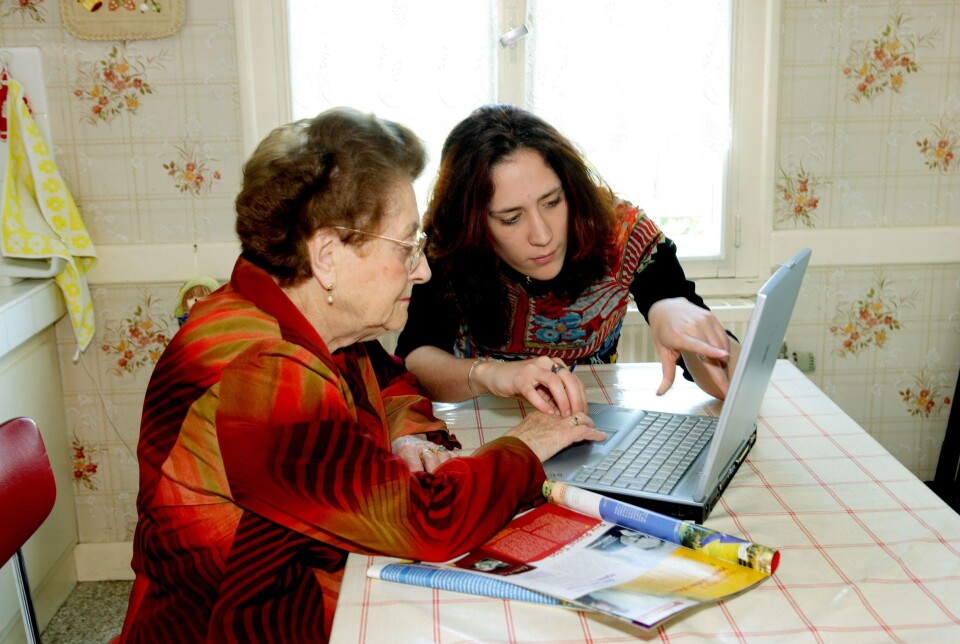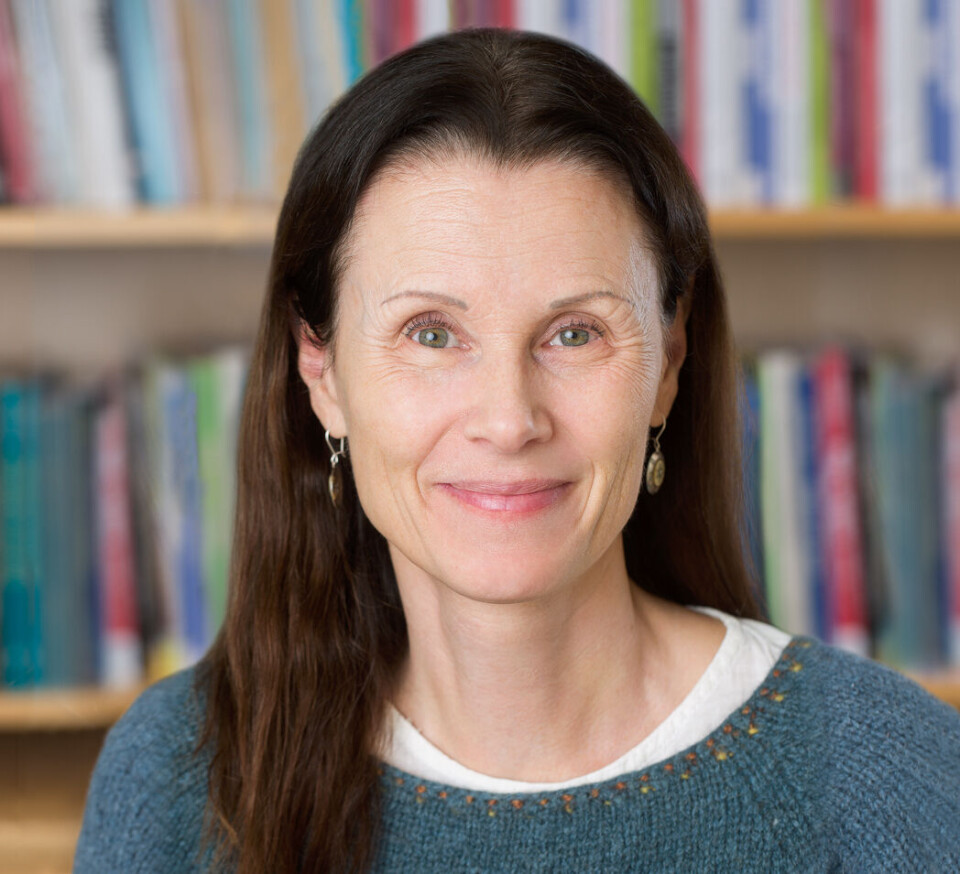THIS CONTENT IS BROUGHT TO YOU BY Oslo Metropolitan University - read more

Adult children increasingly help their elderly parents navigate the online world
"Many older people over the age of 80 have little or no digital competency,” Heidi Gautun says.
“Adult children in Norway now play a crucial role in helping ageing parents overcome the obstacles that our digitalised society has imposed on them,” NOVA researcher and project manager Heidi Gautun says.
The number of elderly people in Norway, as in other countries, is increasing. This has led to an increased need for adult children to step up and help their ageing parents to alleviate the pressure on municipal care services.

In the spring of 2022, Gautun and her colleagues initiated a survey to find out more about what adult children helped their parents with and how often it happened.
The sample consisted of more than 3,000 working adult children aged 45-67, who had at least one living parent.
They were asked whether they provided practical, care or administrative assistance, including digital assistance.
Help with online tasks
The findings, recently published in the Nordic Journal of Working Life Studies, showed that help to perform tasks online was the most common type of help adult children gave their ageing parents.
This includes help to deal with the use of smartphones and online banking, but also to obtain digital information from the public sector.
“When we know that many older people over the age of 80 have little or no digital competence, it is perhaps not so surprising that the need for help is so great,” Gautun says.
The study also showed that many of the adult children provided various types of practical help such as house cleaning, doing the laundry, gardening, snow shovelling, buying groceries, and making repairs both indoors and outdoors.
Very few of the children helped with personal care, such as getting in and out of bed, getting dressed and undressed, eating, washing, and going to the toilet. These are tasks that the local care services mainly take care of.
Older children provide less digital help
When the researchers looked at the children's ages, they found that digital help for parents differs from other forms of help. Practical help, administrative assistance, and care increase with the age of the informants, right up to 67 years of age.
The researchers also found a positive correlation between children’s age and digital help up to the age of 60, but after the age of 60, the analyses show a negative correlation.
Since the early 1980s, research has shown that the most common form of help given by adult children to elderly parents has revolved around practical help.
“We are now seeing a new trend. Digital society is significantly changing the role of daughters and sons as caregivers," Gautun says.
Many services have become physically inaccessible
Comparisons of OECD countries show that Norway is one of the countries that has gone furthest in digitalising society. For many people, both public and private institutions and services have become physically inaccessible.
Contacting institutions and services over the phone has also become more challenging. Phone numbers have become more unavailable, especially for those who are unable to search online, and one usually has to wait a long time to get an answer once the number has been found.
“There is a danger that many elderly people currently feel a form of digital exclusion,” Gautun says.
Other research also supports this view, and have found old age as a risk factor for digital exclusion.
Risk factors
The study by Gautun and her colleagues reveals that the health of elderly people, whether they live alone or in an institution for the elderly, are the most important factors that determine whether, and to what extent, their children provide assistance.
This applies to all forms of assistance; practical assistance, care, administrative support, and help with digital tools.
Among those whose parents lived at home, the parents who received home care services received the most help from their adult children.
“This can probably be explained by the fact that the parents who were assigned home care services had the greatest needs, but that they did not get what they needed from the home care services,” Gautun says.
The findings in this study emphasise the family’s role as a central institution providing help and care that the welfare state is unable to deliver, either because of limited capacity or because the needs are not recognised.
“When people live longer and the population ages, the welfare state can experience problems providing necessary help and care to the elderly. We are then faced with the question of whether adult children with full-time jobs will be able to take care of their parents when they need it,” Gautun concludes.
References:
Gautun, H. and Bratt, C. Help and Care to Older parents in the Digital Society. Nordic Journal of Working Life Studies, Nordic Journal of Working Life Studies, 2023.
Rambøll. IT i praksis 2022 (IT in practice 2022), 2022.
Rybalka et al. Digital sårbarhet: Hvem har høy risiko for å falle utenfor? (Digital vulnerability: Who is at high risk of being left behind?), Statistics Norway, 2022.

This content is paid for and presented by OsloMet
This content is created by Oslo Metropolitan University's communication staff, who use this platform to communicate science and share results from research with the public. Oslo Metropolitan University is one of more than 80 owners of ScienceNorway.no. Read more here.
More content from OsloMet:
-
"We need to talk about how we assess teacher students"
-
Cannabis use in Norway has increased: “Not everyone needs moral lectures or worried looks"
-
Many children with ADHD do not thrive at school
-
An out-of-control race: Why we fear artificial intelligence
-
One in four seniors feels digitally discriminated against
-
Norwegians are among the least lonely in Europe




































